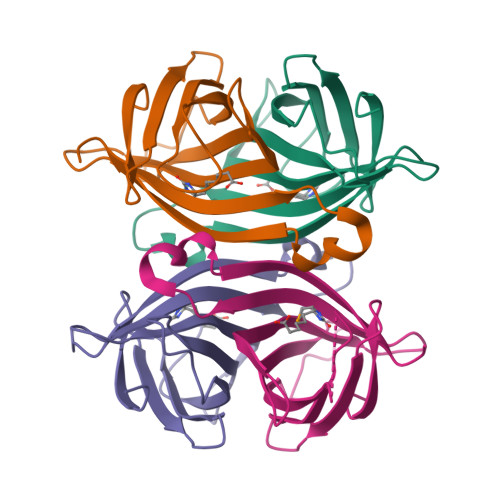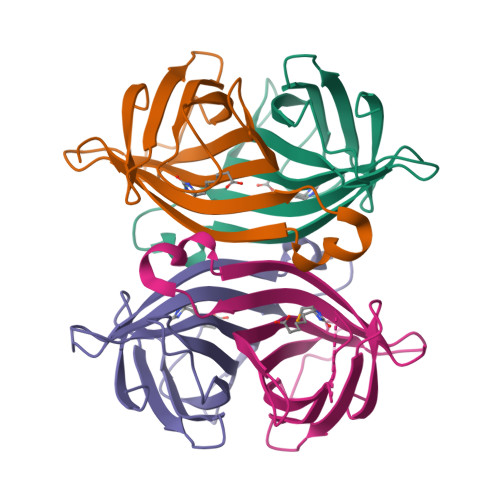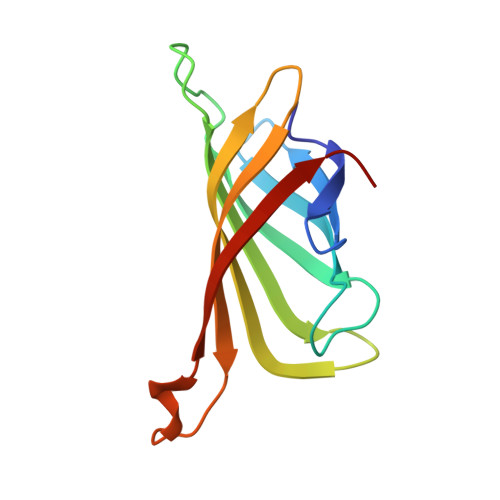Selenium single-wavelength anomalous diffraction de novo phasing using an X-ray-free electron laser.
Hunter, M.S., Yoon, C.H., DeMirci, H., Sierra, R.G., Dao, E.H., Ahmadi, R., Aksit, F., Aquila, A.L., Ciftci, H., Guillet, S., Hayes, M.J., Lane, T.J., Liang, M., Lundstrom, U., Koglin, J.E., Mgbam, P., Rao, Y., Zhang, L., Wakatsuki, S., Holton, J.M., Boutet, S.(2016) Nat Commun 7: 13388-13388
- PubMed: 27811937
- DOI: https://doi.org/10.1038/ncomms13388
- Primary Citation of Related Structures:
5JD2 - PubMed Abstract:
Structural information about biological macromolecules near the atomic scale provides important insight into the functions of these molecules. To date, X-ray crystallography has been the predominant method used for macromolecular structure determination. However, challenges exist when solving structures with X-rays, including the phase problem and radiation damage. X-ray-free electron lasers (X-ray FELs) have enabled collection of diffraction information before the onset of radiation damage, yet the majority of structures solved at X-ray FELs have been phased using external information via molecular replacement. De novo phasing at X-ray FELs has proven challenging due in part to per-pulse variations in intensity and wavelength. Here we report the solution of a selenobiotinyl-streptavidin structure using phases obtained by the anomalous diffraction of selenium measured at a single wavelength (Se-SAD) at the Linac Coherent Light Source. Our results demonstrate Se-SAD, routinely employed at synchrotrons for novel structure determination, is now possible at X-ray FELs.
Organizational Affiliation:
Linac Coherent Light Source, SLAC National Accelerator Laboratory, Menlo Park, California 94025, USA.



















